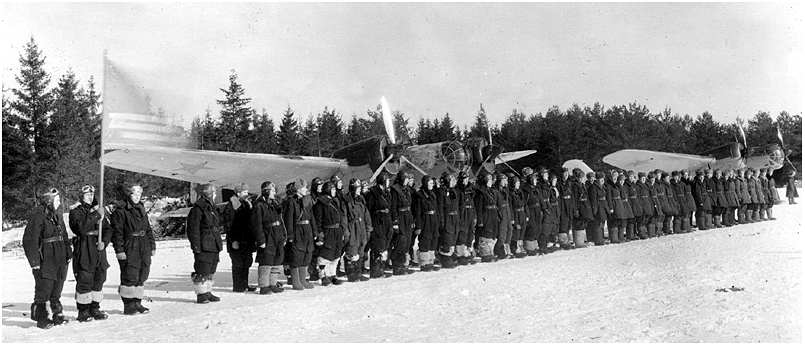 Les ailes de navigateur de première classe (modèle 1950-1961).
Les ailes de navigateur de première classe (modèle 1950-1961).
First Class navigator's wings (1950-1961 model).
 Les ailes de navigateur de première classe (modèle 1950-1961).
Les ailes de navigateur de première classe (modèle 1950-1961).
First Class navigator's wings (1950-1961 model).
If the history of the two target-towing squadrons present in the GDR since the mid-fifties is relatively well known
(see > 3.2 The target-towing units), the immediate post-war period is rather vague.
Reports from such Western intelligence services as the German BND (Bundesnachrichtendienst - Federal Intelligence Service) or the CIA (Central Intelligence Agency)
sometimes detail the presence or activity of aircraft carrying out this type of mission. But of course, the units are not formally identified there, or sometimes even incorrectly.
This article does not claim to retrace the history of the beginnings of target-towing in the GDR. However, it lifts the veil on a precisely identified unit whose primary
vocation was not towing targets! The following text is essentially based on the study of two flight logs. It all started when a new friend sent us copies of some of his father's
flight log pages. They contained some puzzles that were gradually solved. Later, we accidentally discovered
on a Russian forum a second flight log from the same unit during the same period! This unexpected discovery made it possible to refine the study and confirm certain conclusions.
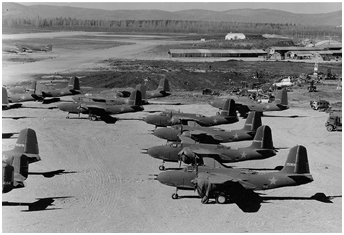
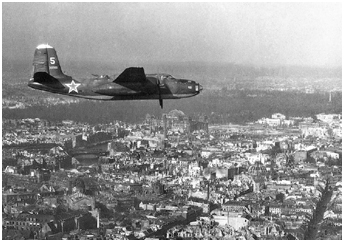 Konstantin Georgiyevich Berezin, owner of the main flight log that we will study, was a navigator third class during the Great Patriotic War.
The aircraft that he flew are specified in his flight log: Polikarpov Po-2, Polikarpov R-5, Tupolev TB-3, Tupolev SB and Douglas A-20J (1).
He was a Guards Senior Lieutenant when the war ended. His service records - mentioned on his "CPSU Card" - specify that, towards the end of the war,
he was assigned to the 22nd Guards Krasnoyarsk Bomber Aviation Regiment (22.GBAP ex-22.GNBAP ex-1.NBAP > Link) which was subordinate
to the 321st Bomber Aviation Division (321.BAD), itself part of the 8.VA, operating in support of the 4th Ukrainian Front.
Konstantin Georgiyevich Berezin, owner of the main flight log that we will study, was a navigator third class during the Great Patriotic War.
The aircraft that he flew are specified in his flight log: Polikarpov Po-2, Polikarpov R-5, Tupolev TB-3, Tupolev SB and Douglas A-20J (1).
He was a Guards Senior Lieutenant when the war ended. His service records - mentioned on his "CPSU Card" - specify that, towards the end of the war,
he was assigned to the 22nd Guards Krasnoyarsk Bomber Aviation Regiment (22.GBAP ex-22.GNBAP ex-1.NBAP > Link) which was subordinate
to the 321st Bomber Aviation Division (321.BAD), itself part of the 8.VA, operating in support of the 4th Ukrainian Front.
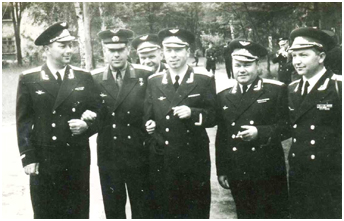
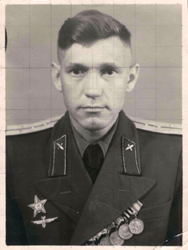 D. Ya. Matiounine photographié après la guerre. Non visible sur cette photo, il était titulaire de l'Ordre du Drapeau rouge.
On distingue cependant très bien son Ordre de l'Etoile rouge et ses ailes de navigateur de troisième classe.
D. Ya. Matiounine photographié après la guerre. Non visible sur cette photo, il était titulaire de l'Ordre du Drapeau rouge.
On distingue cependant très bien son Ordre de l'Etoile rouge et ses ailes de navigateur de troisième classe.
D. Ya. Matyunin photographed after the war. He was awarded the Order of the Red Banner and Order the Red Star - the latter is clearly visible
here, above his third-class navigator's wings.
His period of service within this Front (the equivalent of an army group) extended from November 1944 to July 1945. In Section IV of the flight log that we will detail later,
we learn that Berezin accomplished 27 combat missions in 55 hours of flight aboard Bostons - this is how the Soviets generally referred to the A-20, rather than Havoc.
The 22.GBAP celebrated the victory in May 1945 in Oberglogau in Silesia but it quickly moved towards Roßweide Airfield, a few kilometers from there, which it occupied until mid-August.
The regiment then returned to the USSR to Sutisky Airfield south of Vinnitsa where it was stationed until mid-December. In January 1946, the unit was established permanently near Fergana in Uzbekistan,
until its dissolution in 1960 (2). The notion of Front having disappeared with the cessation of hostilities, the 22.GBAP was therefore subordinated
to the Carpathian Military District from July 1945,
but only until December. Indeed, Berezin's unit, to which he remained attached until January 1952, was reassigned to the 218.BAD (6.VA) from January 1946, under the command of the Turkestan Military District.
In July 1949, the 218.BAD was incorporated into the 85th Bomber Aviation Corps (85.BAK) of the 73.VA (ex-6.VA).
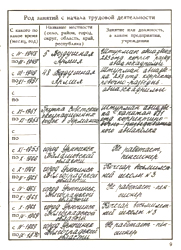 Berezin was seconded to the Group of Soviet Occupation Forces in Germany (GSOVG) precisely on January 5, 1952, where he was assigned to the 931st Separate Spotting
(including artillery adjustment) and Reconnaissance Aviation Regiment (931.OKRAP), the same one that in the meantime became the 931.OGRAP operating MiG-25RBs at Werneuchen
before the fall of the Berlin Wall. Berezin stayed there between January 1952 and April 1957 when he left the service for health reasons and took his pension.
Berezin was seconded to the Group of Soviet Occupation Forces in Germany (GSOVG) precisely on January 5, 1952, where he was assigned to the 931st Separate Spotting
(including artillery adjustment) and Reconnaissance Aviation Regiment (931.OKRAP), the same one that in the meantime became the 931.OGRAP operating MiG-25RBs at Werneuchen
before the fall of the Berlin Wall. Berezin stayed there between January 1952 and April 1957 when he left the service for health reasons and took his pension.
The second flight log concerns Captain Dimitry Yakovlevich Matyunin, navigator third class. By an extraordinary stroke of luck, he too was a member of the 931.OKRAP - between November 1951 and November 1955 -
where he probably rubbed shoulders with Berezin, but not necessarily carrying out the same missions about which we will discuss later. His purely aeronautical course during the war
when he was a pilot-observer is somewhat similar to that of Berezin: Po-2, R-5, TB-3, SB, Yak-4, Su-2 and Il-2. Matyunin was on the front line on June 22, 1941 as a pilot-observer on Yak-4!
> Link.
But what does this have to do with towing targets, do you think? Patience.
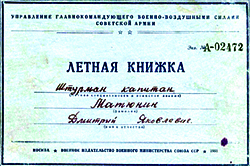 In order to understand what follows, we must first return back to the past and the evolution of the 931.OKRAP and remember that
each Soviet military unit (and Russian today) was assigned an identification number Voyskovaya Chast' Polevaya Pochta (ВЧ ПП) or field post number of a military unit.
This served as a postal number for mail and also was an identification number that did not reveal the specificity of the unit or the regimental, divisional, etc. number of the unit.
Moreover, former military personnel often mention this number during exchanges on social networks or in forums without specifying further what type of unit it is. We will precede these numbers
with the letters "FPN."
In order to understand what follows, we must first return back to the past and the evolution of the 931.OKRAP and remember that
each Soviet military unit (and Russian today) was assigned an identification number Voyskovaya Chast' Polevaya Pochta (ВЧ ПП) or field post number of a military unit.
This served as a postal number for mail and also was an identification number that did not reveal the specificity of the unit or the regimental, divisional, etc. number of the unit.
Moreover, former military personnel often mention this number during exchanges on social networks or in forums without specifying further what type of unit it is. We will precede these numbers
with the letters "FPN."
The 931.OKRAP finds its origins in the Second World War, when it was activated as the 98.OKRAP in March-April 1944 on the basis of the 47., 53., 68. and 69.OKRAE, as well as the 11.GvOKRAE
(> Link 1 / Link 2). The regiment was part of the 16.VA order of battle (3).
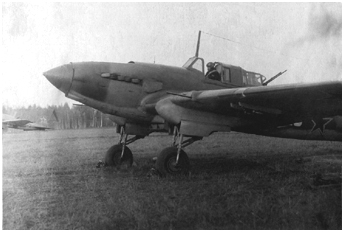
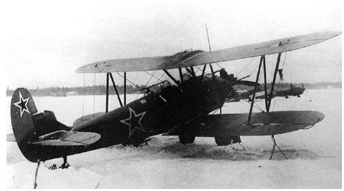 The OKRAP units were tasked with photographic and visual reconnaissance in support of the artillery as well as artillery fire correction.
The 98.OKRAP received the honorific of "Prazhskiy" in November 1944 in recognition of its support operations carried out within the framework of the great tank battle of Praga (near Warsaw, east of
the Vistula) that took place between July and September 1944. The aircraft types of the unit then included Yak-9D, Il-2KR, UIl-2 and Po-2. From April 1945, the regiment successively occupied the
airfields at Warnitz (Ostbrandenburg); Mohrin (Ostbrandenburg - April / May); Fürstenwalde (May 1945 / January 1946); Köthen (1946 / April 1950): A-20 arrival; Parchim (April 1950 / 1951):
tow aircraft - A-20; Stendal (April 1950 / end 1953): reconnaissance and spotter aircraft - Il-2KR, Il-10, Po-2; Altes Lager (1952 / 1955): tow aircraft (and liaison) -
A-20, Tu-6, Il-28, Po-2; Zerbst (1954 / May 58): Il-28R, MiG-15Rbis, Yak-11, Po-2, Yak-12, Mi-1KR; Stendal (May 1958 / July 1968): Il-28R, Yak-27R, Yak-28R, Mi-1KR, Mi-4(TARK?), Li-2(?); and Werneuchen
(July 1968 / May 1991): Il-28R, Yak-27R, Yak-28R, Yak-28PP, MiG-25RB, MiG-25BM (4).
The OKRAP units were tasked with photographic and visual reconnaissance in support of the artillery as well as artillery fire correction.
The 98.OKRAP received the honorific of "Prazhskiy" in November 1944 in recognition of its support operations carried out within the framework of the great tank battle of Praga (near Warsaw, east of
the Vistula) that took place between July and September 1944. The aircraft types of the unit then included Yak-9D, Il-2KR, UIl-2 and Po-2. From April 1945, the regiment successively occupied the
airfields at Warnitz (Ostbrandenburg); Mohrin (Ostbrandenburg - April / May); Fürstenwalde (May 1945 / January 1946); Köthen (1946 / April 1950): A-20 arrival; Parchim (April 1950 / 1951):
tow aircraft - A-20; Stendal (April 1950 / end 1953): reconnaissance and spotter aircraft - Il-2KR, Il-10, Po-2; Altes Lager (1952 / 1955): tow aircraft (and liaison) -
A-20, Tu-6, Il-28, Po-2; Zerbst (1954 / May 58): Il-28R, MiG-15Rbis, Yak-11, Po-2, Yak-12, Mi-1KR; Stendal (May 1958 / July 1968): Il-28R, Yak-27R, Yak-28R, Mi-1KR, Mi-4(TARK?), Li-2(?); and Werneuchen
(July 1968 / May 1991): Il-28R, Yak-27R, Yak-28R, Yak-28PP, MiG-25RB, MiG-25BM (4).
In January 1949, the 98.OKRAP (FPN 18348) changed both its designation and its FPN to become the 931.OKRAP (FPN.....). Then, the regiment once again changed of designation to become the 931.ORAP
(in the absence of verified sources, probably during the late 1950s and the early 1960s) - it was not until the end of the 1960s that the unit received the Guards title,
probably inherited from one of the constituent units of the 98.OKRAP, the 11.GvOKRAE. In September 1955, several units of the 24.VA (5)
received new FPNs. The fact is that from this point on, 82377 had definitely become the FPN of the 931.OKRAP.
| 98.OKRAP evolution in the GDR | |||||||||||||||
|---|---|---|---|---|---|---|---|---|---|---|---|---|---|---|---|
| Unit | FPN | Date | Airbase | Aircraft | Notes | ||||||||||
| 98.OKRAP | 18348 | 04/1945 | Warnitz | Yak-9D / Il-2KR / UIl-2 / Po-2(NAK) | |||||||||||
| 98.OKRAP | 18348 | 04-05/1945 | Mohrin | Yak-9D / Il-2KR / UIl-2 / Po-2(NAK) | |||||||||||
| 98.OKRAP | 18348 | 05/1945 - 01/1946 | Fürstenwalde | Yak-9D / Il-2KR / UIl-2 / Po-2 | |||||||||||
| 98.OKRAP / 931.OKRAP (01/1949) | 18348 / 42004 (01/1949) | 1946 - 04/1950 | Köthen | Yak-9D / Yak-9P / Il-2KR / UIl-2 / Po-2 / A-20 | A-20 for target-towing | ||||||||||
| 931.OKRAP | 42004 | 04/1950 - 1951 | Parchim | A-20 | Target-Towing Section | ||||||||||
| 931.OKRAP | 42004 | 04/1950 - end 1953 | Stendal | Il-2KR / Il-10 / Po-2 | |||||||||||
| 931.OKRAP | 42004 | 1952 - 1955 | Altes Lager | A-20 / Tu-6 / Il-28 / Po-2 | Target-Towing Section
subordinate to FPN 68083 in 1954-55 read part 3 | ||||||||||
| 931.OKRAP | 42004 / 82377 (end 1955) | 1954 - 05/1958 | Zerbst | Il-28(R) / MiG-15Rbis / Yak-11 / Po-2 / Yak-12 / Mi-1KR | |||||||||||
| 931.OKRAP / ORAP / OGRAP | 82377 | 05/1958 - 07/1968 | Stendal | Il-28R / Yak-27R / Yak-28R / Mi-1KR / Mi-4(TARK ?) / Li-2(?) | |||||||||||
| 931.OGRAP | 82377 | 07/1968 - 05/1991 | Werneuchen | Il-28R / Yak-27R / Yak-28R / Yak-28PP / MiG-25RB. / MiG-25BM | |||||||||||
notes
(1)
They were actually A-20G. This confusion has its origin in the reproduction in certain documents of the letter "G" in phonetic form, that is to say
"Ж" in Cyrillic ("Ж" is written "J" in French and "Zh" in English) which, as in French, corresponds a little to the pronunciation of the letter "G"
(while in English, this letter is pronounced "Gee"...). The correct reproduction of the "G" in Cyrillic is "Г", but we find it mentioned in Latin
character in one of the pages of the flight log!
(2)
In Fergana, the 194.GVTAP occupied the base of the disbanded 22.GBAP that was equiped with Il-28 aircraft. The flight and
technical personnel
from the 22.GBAP retrained on the Li-2 aircraft and joined the ranks of the new arrivals.
(3)
The 93.OKRAP "Berlin" (FPN 22614) (> Link) was also on strength with the 16.VA. It was established in February 1944 from the 25.OKRAE. The
regiment was based at Topper (Ostbrandenbug) in April 1945, then at Oranienburg until January 1946 when it moved to Insterburg
(3.VA - Special Military District at Kaliningrad).
(4)
The regiment was temporarily deployed to the following airfields due to work on the runways:
- Stendal 1950
- Neuruppin (04 - 07/1962)
- Parchim (03 - 10/1971)
(5)
In fifty years of existence, the Air Army supporting the Soviet air forces stationed in Eastern Germany changed its tactical number twice. The first
time was in January 1949 when the 16.VA became the 24.VA and the second time was in April 1968 when it returned to its original designation
of 16.VA. However, in June 1980, the 16.VA lost temporarily its number to become the "Military Air Forces of the Group of Soviet Forces in
Germany" until May 1988.
 |
Flight Logs > Part 2 | > Part 3 | > Part 4 | > Part 5 | > Part 6 |
 |
Plan du site - Sitemap |  |

